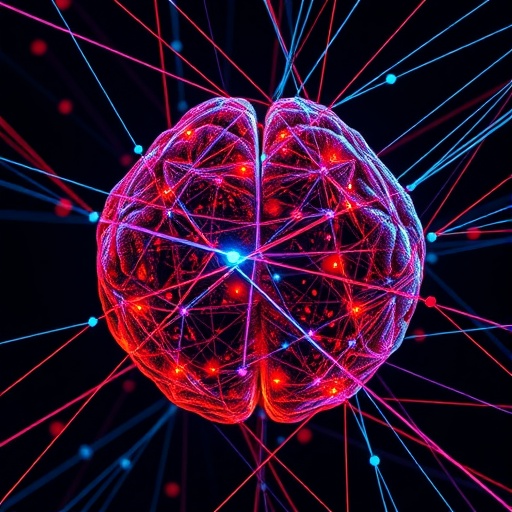In a groundbreaking study published in Natural Resources Research, researchers have unveiled a pioneering method for automatic lithology classification using advanced machine learning techniques. This innovative approach integrates whole-core images captured from both visible light and ultraviolet photography, representing a significant advancement in geosciences and petroleum exploration. The study, led by Ghavami, Sadeghnejad, and Khoozan, demonstrates how deep learning algorithms, particularly multi-input convolutional neural networks (CNNs), can enhance the efficiency and accuracy of lithological assessments, which are critical for identifying the characteristics of subsurface formations.
The importance of accurate lithology classification cannot be overstated. In geological studies, particularly in the context of petroleum and mineral exploration, understanding the composition and structure of rock layers is vital for resource evaluation. Traditional methods of lithology classification often rely on manual interpretation of core samples, which can be time-consuming and subject to human error. The emergence of automated systems utilizing machine learning can drastically reduce the time required for analysis and improve the reliability of the data obtained.
The researchers employed a multi-input convolutional neural network architecture, allowing the model to process images captured under different light conditions simultaneously. By harnessing both visible light and ultraviolet images, the model can extract a wealth of features that characterize the lithological composition of the core samples. Ultraviolet photography, in particular, reveals additional details that might remain hidden under normal lighting conditions, such as mineral fluorescence. This holistic approach offers a more comprehensive analysis, ultimately leading to better-informed geological interpretations.
During experimentation, the CNN was trained on a diverse dataset comprising numerous whole core images from various geological formations. This was critical for the model to learn the intricate patterns associated with different lithologies. The researchers meticulously curated the dataset to ensure it encompassed a wide range of rock types and textures, enabling the model to generalize findings effectively. The result is a robust neural network capable of distinguishing complex geological features with remarkable precision.
To validate the effectiveness of their model, the team conducted rigorous testing against established lithology classification standards. They assessed the model’s performance using an array of metrics, including accuracy, precision, recall, and F1 score. The results were overwhelmingly positive: the multi-input CNN demonstrated a marked improvement over traditional classification methods, showcasing its potential to revolutionize the field of geosciences.
Moreover, the implications of this research extend beyond academic interest; there lies a significant practical application in the extraction industries. Accurate lithology classification informs drilling strategies in the oil and gas sector, dictates reservoir management approaches, and aids in environmental assessments. The predictive power delivered by machine learning models can enhance decision-making processes, potentially leading to more efficient resource extraction while mitigating ecological impacts.
In addition to its practicality, this research exemplifies the interdisciplinary nature of modern scientific inquiry. The amalgamation of fields such as geology, artificial intelligence, and computer vision illustrates how collaborative efforts can result in innovation previously thought unattainable. This convergence opens the door to future studies that might explore even more sophisticated algorithms or integrate additional data sources, such as geophysical and petrophysical measurements.
As part of the ongoing research, the authors also considered the ethical implications of automating tasks traditionally performed by geologists and other specialists. They advocate for a paradigm in which machine learning augments human expertise rather than completely replaces it. The synergy between automated systems and human insight is seen as a pathway to enhanced scientific discovery, encouraging a more efficient workflow while preserving the essential role of trained professionals.
The research also acknowledges potential limitations of the current model. The variability and quality of input images can significantly influence the accuracy of classifications. Factors such as lighting conditions, image resolution, and core sample integrity must be meticulously controlled to ensure the model functions optimally. Consequently, ongoing efforts in refining data acquisition methods and improving image processing will be crucial for advancing the technology further.
With such promising results, it is imperative to consider how these advancements will be shared with the broader scientific community and industry stakeholders. The authors emphasize the need for open-source platforms and collaborative research initiatives to disseminate their findings and tools. This would foster an environment where various sectors can benefit from shared knowledge, ultimately driving innovation across geosciences and related fields.
Looking ahead, the potential for this technology is boundless. As the energy industry grapples with the pressing challenge of transitioning towards more sustainable practices, the ability to efficiently and accurately analyze geological formations becomes increasingly crucial. Integrating machine learning into geological assessments can enable the identification of alternative sources of energy, such as geothermal or hydrogen-based solutions, making significant strides toward a greener future.
In conclusion, the study by Ghavami et al. not only opens up new avenues for lithology classification but also underscores the transformative power of machine learning in scientific research. As techniques continue to evolve and integrate, researchers remain optimistic about the future of geological exploration and its role in addressing the pressing energy challenges of our time. The intersection of technology and geosciences heralds a new era of understanding our planet’s complex systems and resources, laying the groundwork for sustainable management practices that benefit all.
Researchers and industry leaders alike are encouraged to engage with this work, adopt these methodologies, and collaborate on future studies that harness the full potential of artificial intelligence in geology. The journey towards improved lithological assessment is just beginning, and it promises to be as transformative as the technology driving it.
Subject of Research: Automatic lithology classification using multi-input convolutional neural networks.
Article Title: Automatic Lithology Classification of Whole Core Images Using Multi-Input Convolutional Neural Networks: Integrating Visible Light and Ultraviolet Photography.
Article References:
Ghavami, S.Z., Sadeghnejad, S., Khoozan, D. et al. Automatic Lithology Classification of Whole Core Images Using Multi-Input Convolutional Neural Networks: Integrating Visible Light and Ultraviolet Photography.
Nat Resour Res 34, 2443–2465 (2025). https://doi.org/10.1007/s11053-025-10543-5
Image Credits: AI Generated
DOI: https://doi.org/10.1007/s11053-025-10543-5
Keywords: Lithology classification, machine learning, convolutional neural networks, visible light photography, ultraviolet photography, geological exploration.




